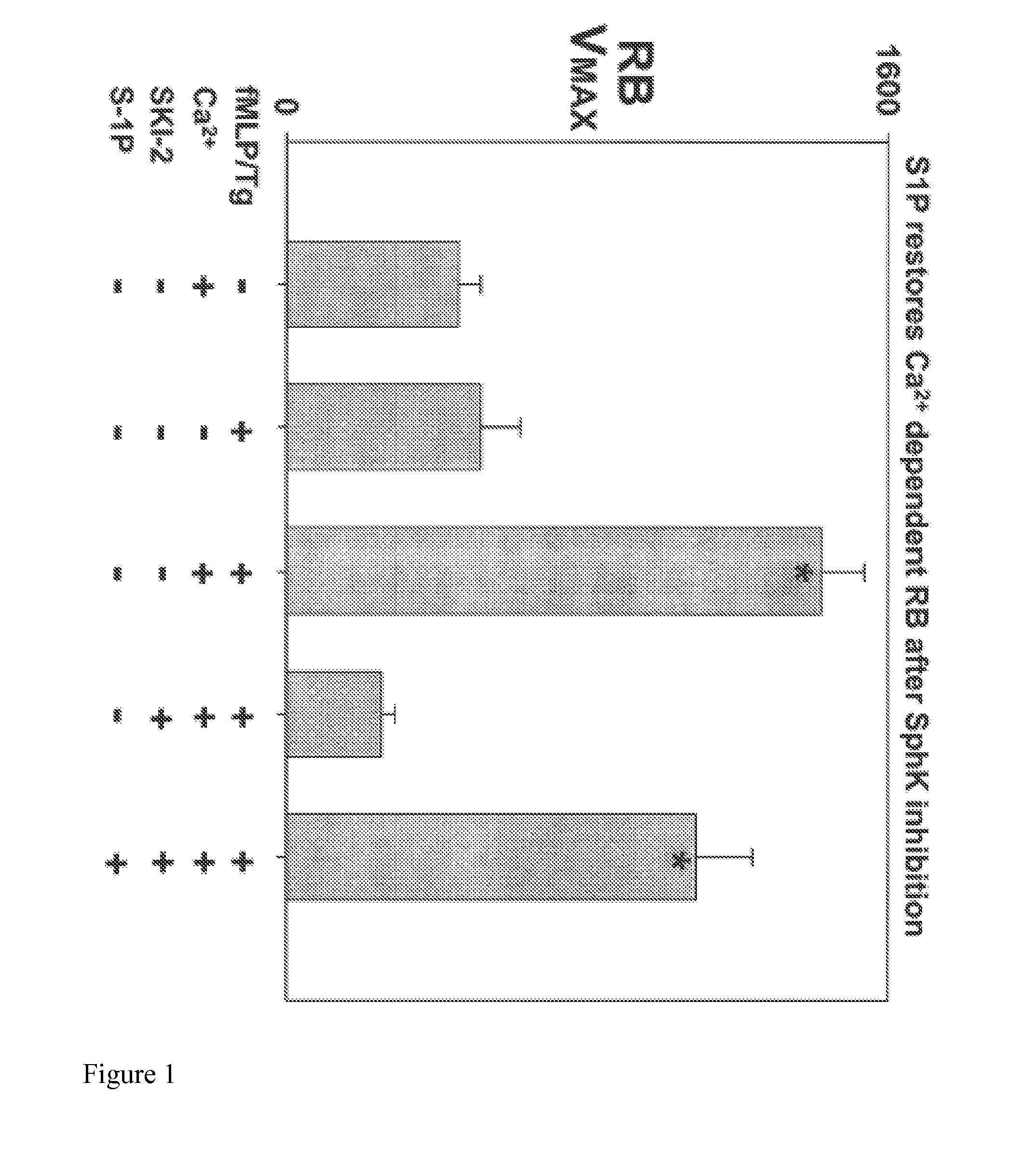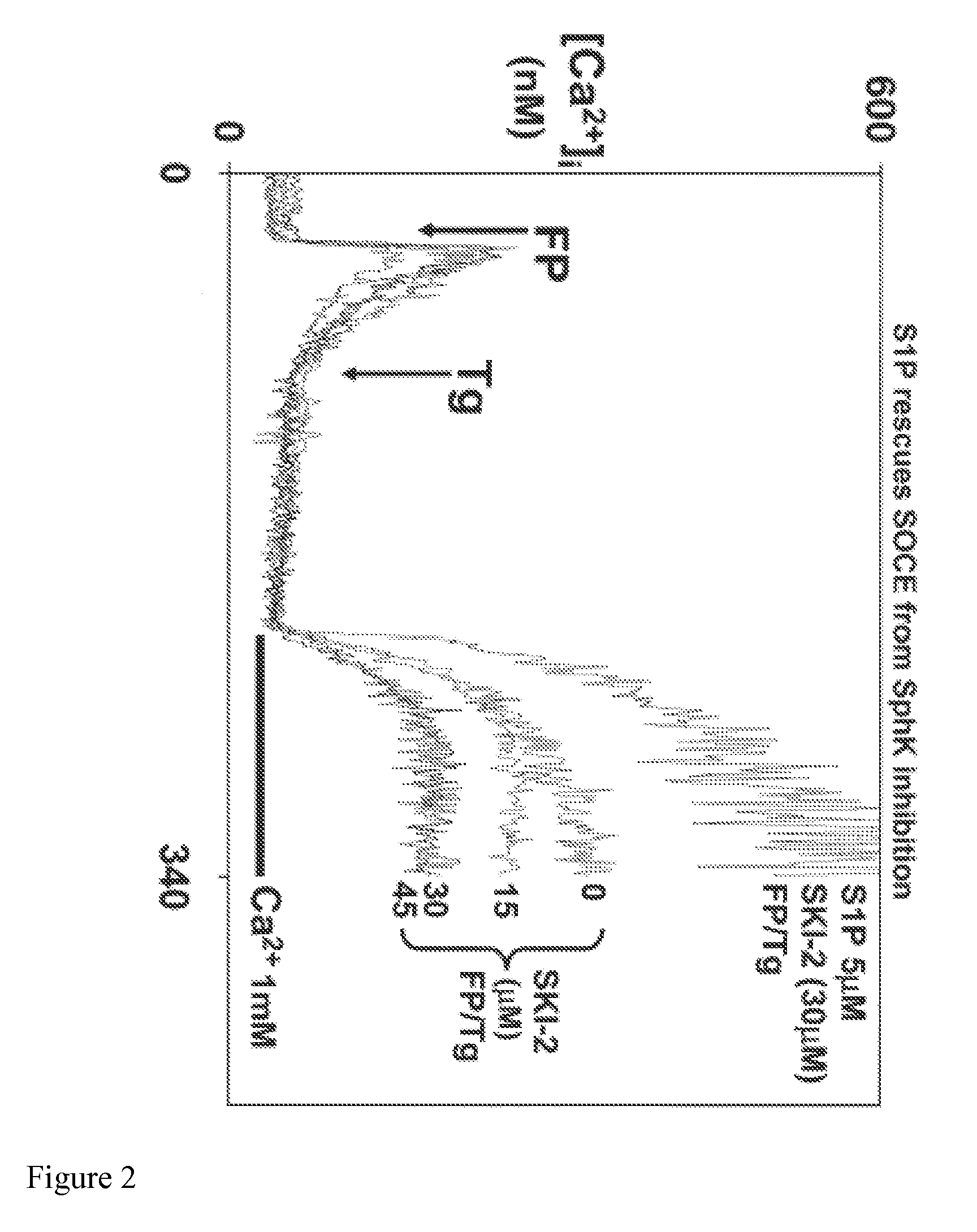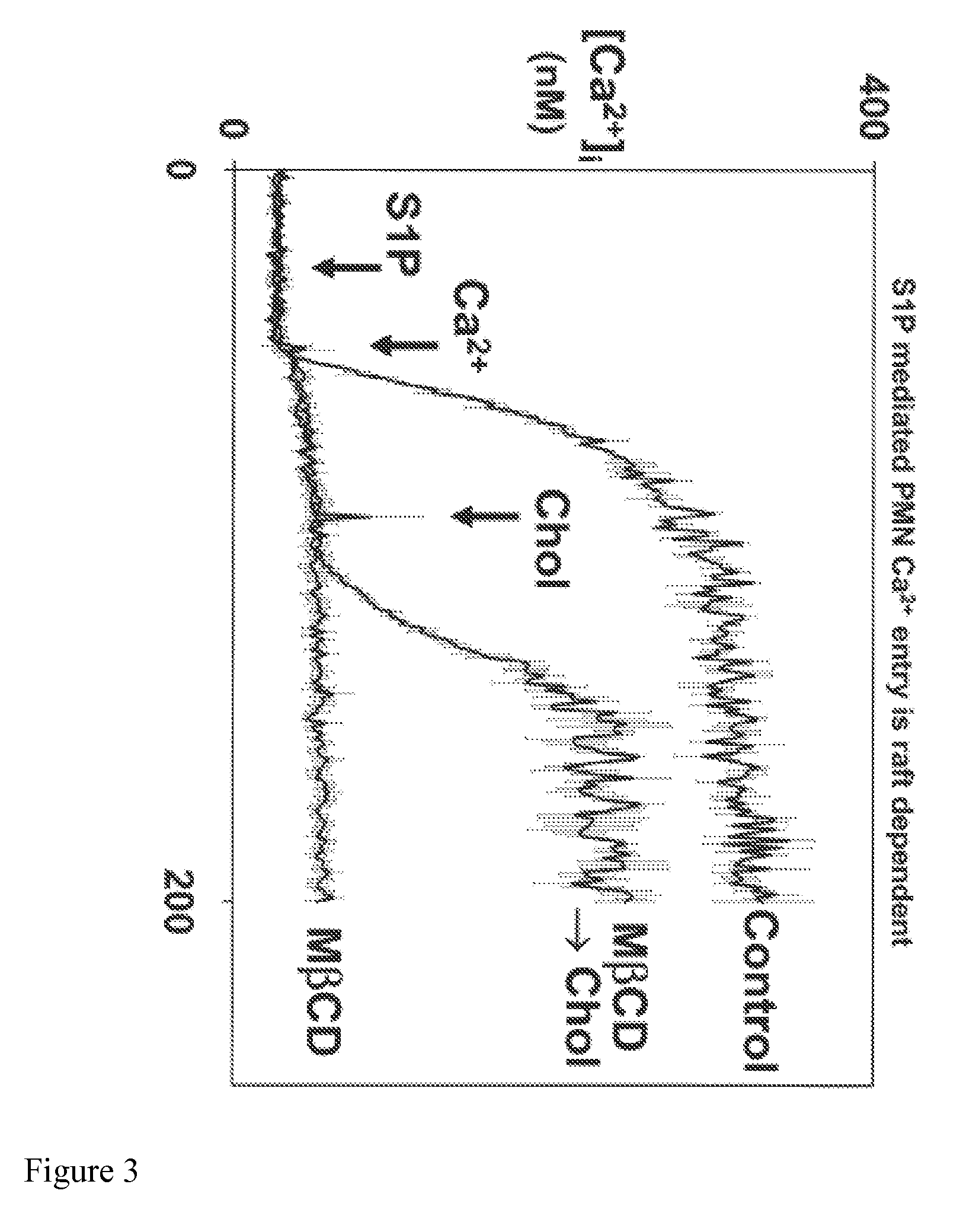Method for modulating inflammatory responses by altering plasma lipid levels
a technology of plasma lipids and inflammatory responses, applied in the direction of peptide sources, metabolism disorders, immunological disorders, etc., can solve the problems that the mechanism by which calcium entry can be regulated to modulate inflammatory cell responses is also not understood, and achieve the effects of modulating immune-related disorders, reducing or increasing the patient's plasma concentration of free cholesterol, and modulating hyperimmune or autoimmune responses
- Summary
- Abstract
- Description
- Claims
- Application Information
AI Technical Summary
Benefits of technology
Problems solved by technology
Method used
Image
Examples
example 1
[0069]We hypothesized that calcium-entry dependent functions like RB would depend upon S1P synthesis and subsequent S1P interactions with rafts. Thus we developed a calcium-entry dependent RB model where Ca entry was manipulated by sphingosine kinase (SphK) inhibition, which inhibits S1P synthesis in response to internal calcium store release. FIG. 2 depicts the SphK inhibitor SKI-2 suppressing SOCE initiated by fMLP (100 nM) and Tg (1 uM) in a dose dependent fashion. Note that the vast majority of cell [Ca2+] increases are due to calcium influx on re-calcifying the medium. To show specificity, note that 5 M S1P reverses 30 μM SKI-2 inhibition.
example 2
[0070]Using the same system to evaluate respiratory burst (RB), SphK inhibition (SKI-2, 30 uM) also blocked fMLP / Tg induced RB down to background levels. (FIG. 1) Just as with Ca2+ entry, we see rescue of RB by S1P (5 uM). n=4; −BSA / +ca buffer in cuvette. ANOVA P<0.001. All Pairwise Multiple Comparison Procedures (Holm-Sidak method) shows that Columns 3 and 5 are different from all other columns (P<0.01). Column 3 is greater than column 5 (P=0.03). No other paired comparisons were significant. Note that in the absence of external calcium fMLP / Tg does not cause RB.
example 3
[0071]To evaluate whether Ca2+-entry responses to S1P were raft dependent, we then disrupted lipid rafts using MBCD to bind raft cholesterol. PMN calcium entry responses to S1P are completely blocked by raft disruption. (FIG. 3) Specificity is shown by reversal of the MβCD effect when cholesterol is replenished. n=3.
PUM
| Property | Measurement | Unit |
|---|---|---|
| pH | aaaaa | aaaaa |
| concentration | aaaaa | aaaaa |
| concentrations | aaaaa | aaaaa |
Abstract
Description
Claims
Application Information
 Login to View More
Login to View More - R&D
- Intellectual Property
- Life Sciences
- Materials
- Tech Scout
- Unparalleled Data Quality
- Higher Quality Content
- 60% Fewer Hallucinations
Browse by: Latest US Patents, China's latest patents, Technical Efficacy Thesaurus, Application Domain, Technology Topic, Popular Technical Reports.
© 2025 PatSnap. All rights reserved.Legal|Privacy policy|Modern Slavery Act Transparency Statement|Sitemap|About US| Contact US: help@patsnap.com



